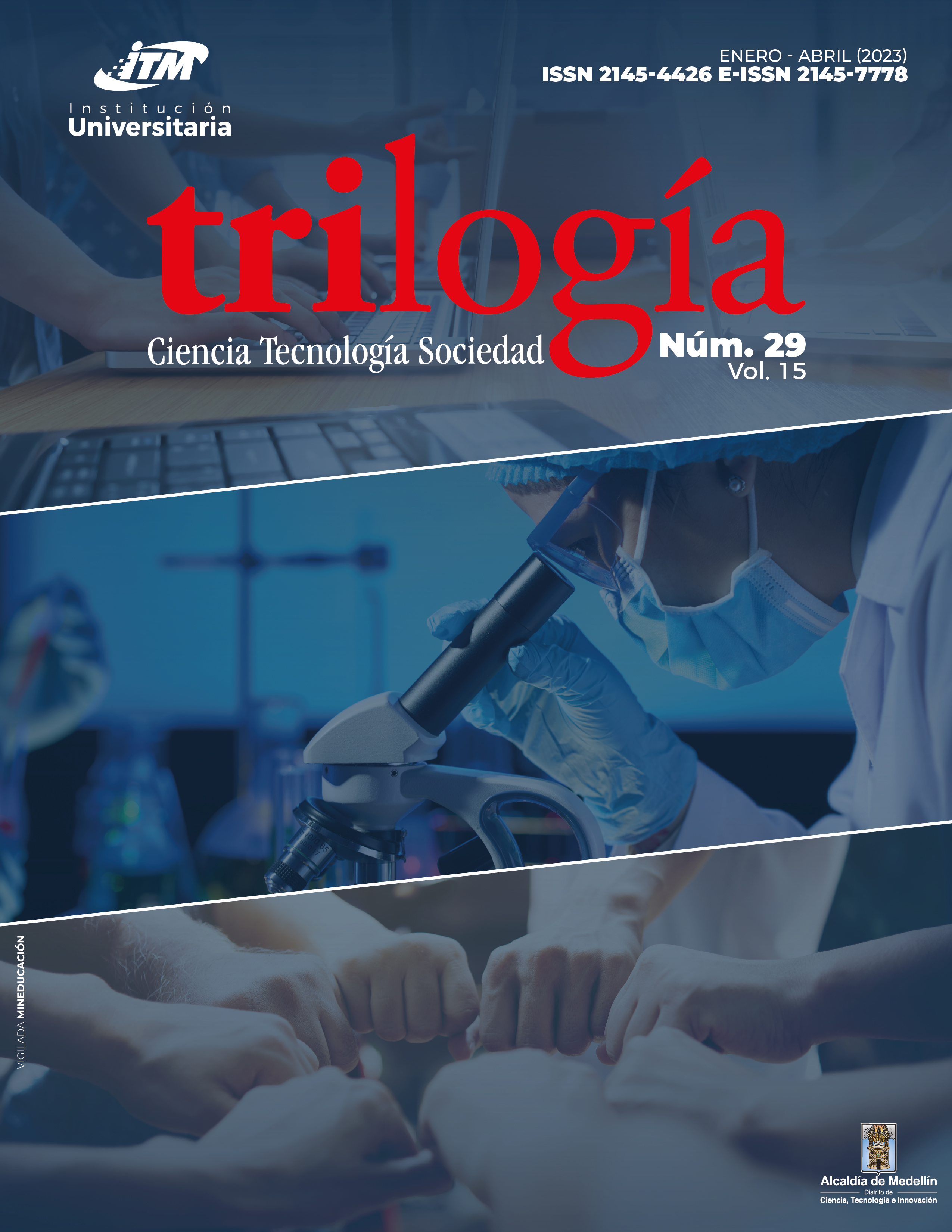El enigma ontoepistemológico de la consciencia. Acerca del transhumanismo y la analogía computacional del cerebro
Resumen
El propósito principal de este artículo es presentar un análisis crítico sobre algunos de los planteamientos epistemológicos y filosóficos más destacados que se han elaborado desde el transhumanismo contemporáneo en relación con la actividad anatómico-funcional del cerebro y a la naturaleza de la consciencia. Desde ese punto de vista, se pretende considerar si el modelo hermenéutico tecnológico-instrumental que se promueve desde los planteamientos de la corriente transhumanista supone una variante comprensiva alternativa a la hora de dilucidar la complejidad ontoepistemológica de la consciencia. Para ello, se lleva a cabo una exploración sobre el modo en que el transhumanismo se ha centrado en ciertos campos tecnocientíficos para desarrollar una prospectiva concreta asociada a las potencialidades cognitivas del ser humano. En ese sentido, se toma en consideración ciertos avances concretos de la neurotecnología de vanguardia y de la neuromodulación artificial (implantología neural, dispositivos neuromórficos, reprogramación neuronal, cultivo controlado en laboratorio de cerebroides, etc.), así como de la inteligencia artificial. De este análisis se desprende un profundo escepticismo en torno a la posibilidad de que el enfoque transhumanista ofrezca un modelo prometedor para abordar exitosamente el antiguo problema de la relación mente-cerebro, ya que, pese al atractivo de algunas de sus especulaciones más audaces en torno a la condición bioantropológica del hombre y de la ontología de lo real, ha optado por actualizar una visión reduccionista y fisicalista de la mente humana.
Referencias bibliográficas
Agatonović, M. (2021). The fiction of simulation: a critique of Bostrom’s simulation argument. AI & Society. https://doi.org/10.1007/s00146-021-01312-y
Anders, G. (2011). La Obsolescencia del Hombre. Sobre la Destrucción de la vida en la época de la tercera revolución industrial (Vol. 2). Pre-textos.
Bacon, F. (2011). La Gran Restauración (Novum Organum). Tecnos.
Ball, P. (2012). Contra natura. Sobre la idea de crear seres humanos. Turner Publicaciones.
Bishop, M. P., Elder, S. T., y Heath, R. G. (1963). Intracranial Self-Stimulation in Man. Science, 140(3565), 394-396. https://doi.org/10.1126/science.140.3565.394
Bostrom, N. (2003). Are We Living in a Computer Simulation? The Philosophical Quarterly, 53(211), 243-255. https://doi.org/10.1111/1467-9213.00309
Bostrom, N. (2017). Superintelligence: Paths, Dangers, Strategies. Oxford University Press.
Chalmers, D. J. (1996). The Conscious Mind: In Search of a Fundamental Theory. Oxford University Press.
Chalmers, D. J. (2005). The Matrix as Metaphysics. En C. Grau (ed.), Philosophers Explore the Matrix (pp. 132-176). Oxford University Press.
Clarke, A. C. (1973). Profiles of the Future: An Inquiry into the Limits of the Possible. Harper & Row.
Delgado, J. M. R. (1969). Physical Control of the Mind: Toward a Psychocivilized Society. Harper & Row.
Descartes, R. (2009). Meditaciones acerca de la Filosofía Primera. Seguidas de las objeciones y respuestas. Universidad Nacional de Colombia.
Descartes, R. (2011). Discurso del método. Alianza Editorial.
Dessauer, F. (1964). Discusión sobre la técnica. Rialp.
Dijksterhuis, E. J. (1969). The mechanization of the World Picture. Oxford University Press.
Dreyfus, H. L. (1992). What computers Still Can't do: A Critique of Artificial Reason. The MIT Press.
Dreyfus, H. L., y Dreyfus, S. E. (1986). Mind over Machine. The Power of Human Intuition and Expertise in the Era of the Computer. Free Press.
Du Bois-Reymond, E. (1872). Über die Grenzen des Naturerkennens. Ein Vortrag in der zweiten öffentlichen Sitzung der 45. Versammlung deutscher Naturforscher und Ärzte zu Leipzig am 14. August 1872. Veit.
Feigl, H. (1958). The “Mental” and the “Physical”. En H. Feigl, M. Scriven, G. Maxwell (eds.), Concepts, Theories, and the Mind-Body Problem (Vol. 2, pp. 370-497). University of Minnesota Press. https://hdl.handle.net/11299/184614
Finkelstein, G. (2013). Emil du Bois-Reymond. Neuroscience, Self, and Society in Nineteenth-Century Germany. The MIT Press.
Floridi, L. (2009). Against digital ontology. Synthese, 168(1), 151-178. https://doi.org/10.1007/s11229-008-9334
Freud, S. (2016). Inhibición, síntoma y angustia. Amorrortu editores.
García Selgas, F. J. (1994). El «cuerpo» como base del sentido de la acción. Reis: Revista Española de Investigaciones Sociológicas, (68), 41-83. https://doi.org/10.2307/40183757
Gödel, K. (1931). Über formal unentscheidbare Sätze der Principia Mathematica und verwandter Systeme I. Monatshefte für Mathematik und Physik, 38, 173-198. https://doi.org/10.1007/BF01700692
Han, B.-C. (2014). Psicopolítica. Herder Editorial.
Handke, P. (2017). Ensayo sobre el cansancio. Alianza Editorial.
Hochreiter, S., y Schmidhuber, J. (1997). Long Short-Term Memory. Neural Computation, 9(8), 1735-1780. https://doi.org/10.1162/neco.1997.9.8.1735
Huxley, A. (1932). Brave New World. Chatto & Windus.
Jung, C. G., y Kerényi, K. (2004). Introducción a la esencia de la mitología. Ediciones Siruela.
Kim, J. (2000). Mind in a Physical World. An Essay on the Mind-Body Problem and Mental Causation. The MIT Press.
Kim, J. (2005). Physicalism, or Something Near Enough. Princeton University Press.
Kurzweil, R. (2005). The Singularity Is Near: When Humans Transcend Biology. Penguin Group.
Larson, E. J. (2021). The Myth of Artificial Intelligence. Why Computers Can’t Think the Way We Do. The Belknap Press of Harvard University Press.
Levesque, H. J. (2014). On Our Best Behavior. Artificial Intelligence, 212, 27-35. https://doi.org/10.1016/j.artint.2014.03.007
Linares, J. E. (2019). Adiós a la naturaleza. La revolución bioartefactual. Plaza y Valdés.
Lloyd, S. (2002). Computational Capacity of the Universe. Physical Review Letters, 88(23), 237901. https://doi.org/10.1103/PhysRevLett.88.237901
Lloyd, S. (2006). Programming the Universe: A Quantum Computer Scientist Takes On the Cosmos. Vintage Books.
Meyrink, G. (2010). El Golem. Plutón ediciones. (Trabajo original publicado en 1915).
Morozov, E. (2015). La locura del solucionismo tecnológico. Clave Intelectual.
Mumford, L. (2016). El pentágono del poder. El mito de la máquina (Vol. 2). Pepitas de Calabaza.
Neumann, J. V. (1966). Theory of Self-Reproducing Automata. University of Illinois Press.
Nöe, A. (2009). Out of Our Heads. Why You Are Not Your Brain, and Other Lessons from the Biology of Consciousness. Hill and Wang.
Nordmann, A. (2012). Object lessons: towards an epistemology of technoscience. Scientiae Studia, 10(especial), 11-31. https://doi.org/10.1590/S1678-31662012000500002
Olds J., y Milner, P. (1954). Positive reinforcement produced by electrical stimulation of septal area and other regions of rat brain. Journal of Comparative and Physiological Psychology, 47(6), 419-427. https://psycnet.apa.org/doi/10.1037/h0058775
Peirce, C. S. (1929). Guessing. The Hound and Horn, 2(3), 267-282.
Putnam, H. (1988). Razón, Verdad e Historia. Tecnos.
Reichenbach, B. R. (1978). Monism and the Possibility of Life after Death. Religious Studies, 14(1), 27-34. https://doi.org/10.1017/S0034412500010465
Ryle, G. (2005). El concepto de lo mental. Ediciones Paidós Ibérica.
Sierra, C. H. (2021). Medical imaginaries and the future horizons of consciousness physiology in the work of Stanisław Lem. Rassegna Italiana di argomenti polacchi, (12), 39-53. https://plitonline.it/2021/plit-12-2021-39-53-carlos-hugo-sierra
Sloterdijk, P. (2000). Normas para el parque humano. Una respuesta a la Carta sobre el humanismo de Heidegger. Ediciones Siruela.
Sloterdijk, P. (2012). Haz de cambiar tu vida. Sobre antropotécnica. Pre-Textos.
Smart, J. J. C. (1959). Sensation and Brain Processes. The Philosophical Review, 68(2), 141-156. https://doi.org/10.2307/2182164
Szocik, K., Tkacz, B., y Gulczyński, P. (2020). The revelation of superintelligence. AI & Society, 35(3), 755-758. https://doi.org/10.1007/s00146-020-00947-7
Steinhart, E. (2010). Theological Implications of the Simulation Argument. Ars Disputandi, 10(1), 23-37. https://doi.org/10.1080/15665399.2010.10820012
Tallis, R. (2008). The Kingdom of Infinite Space. A Portrait of Your Head. Yale University Press.
Tallis, R. (2016). Aping Mankind. Neuromania, Darwinitis and the misrepresentation of humanity. Routledge.
Turing, A. M. (1950). Computing Machinery and Intelligence. Mind, 59(236), 433-460. https://doi.org/10.1093/mind/LIX.236.433
Vinge, V. (1993). The Coming Technological Singularity: How to Survive in the Post-Human Era. Vision 21: Interdisciplinary Science and Engineering in the Era of Cyberspace, 11-22. https://ntrs.nasa.gov/citations/19940022856
Vogt, C. (1874). Physiologische Briefe für Gebildete aller Stände. Ricker.
Wells, H. G. (1896). The Island of Doctor Moreau. Heinemann.
Zamiatin, E. (1924). We. Dutton.
Zuse, K. (1969). Rechnender Raum. Friedrich Vieweg & Sohn.
Descargas
Derechos de autor 2023 Carlos Hugo Sierra

Esta obra está bajo una licencia internacional Creative Commons Atribución-NoComercial-CompartirIgual 4.0.

| Estadísticas de artículo | |
|---|---|
| Vistas de resúmenes | |
| Vistas de PDF | |
| Descargas de PDF | |
| Vistas de HTML | |
| Otras vistas | |







